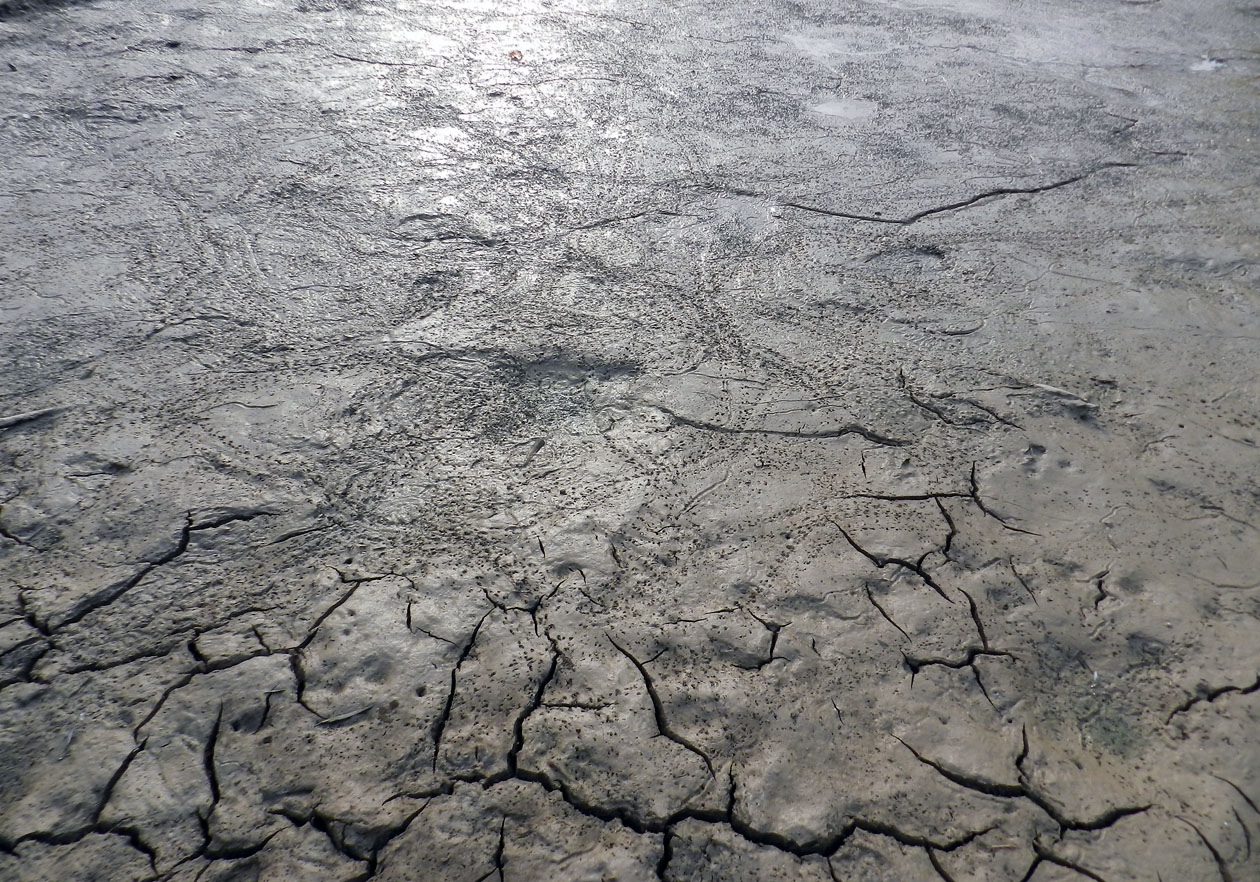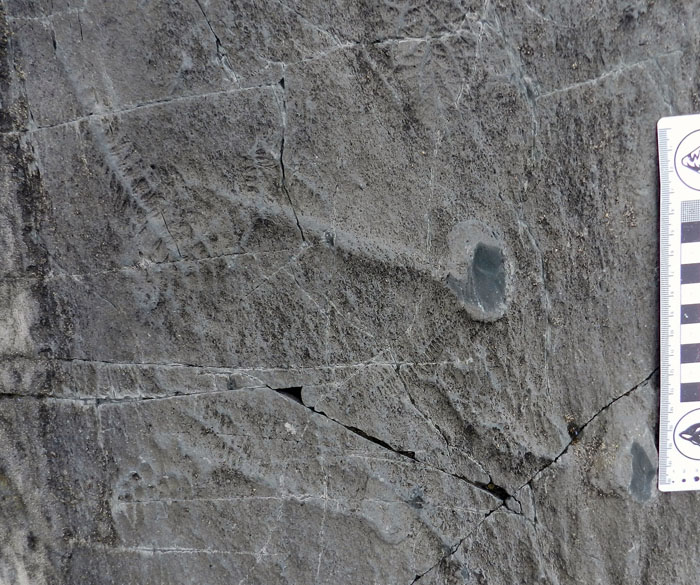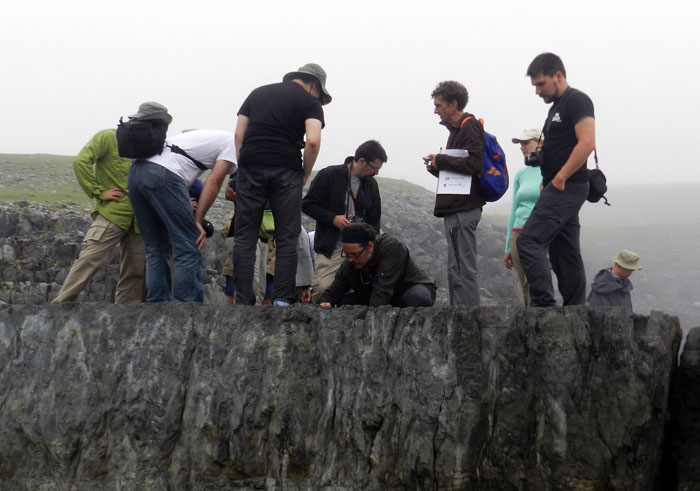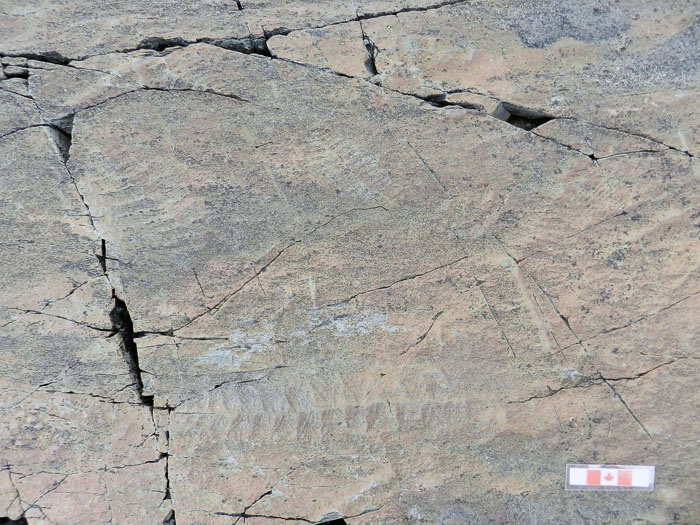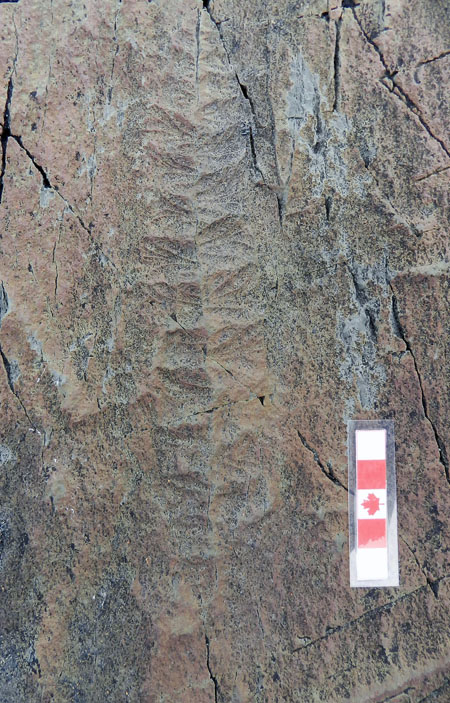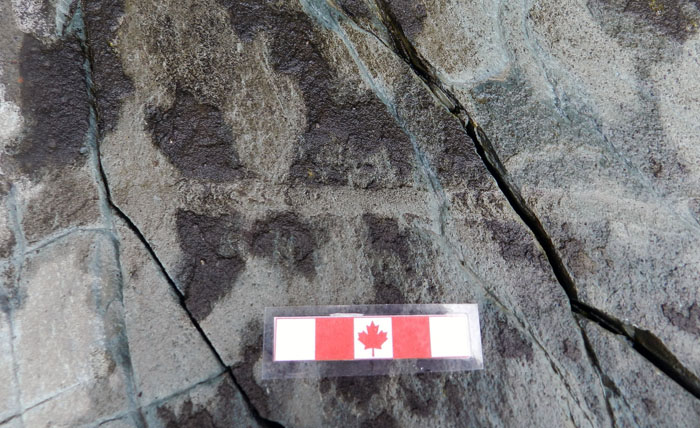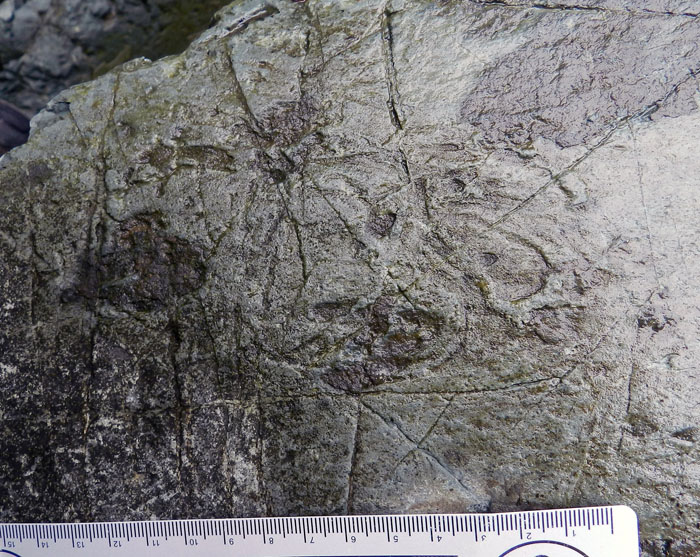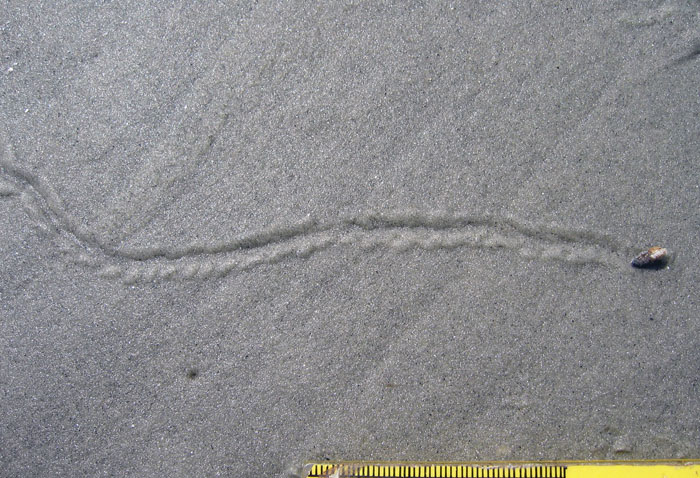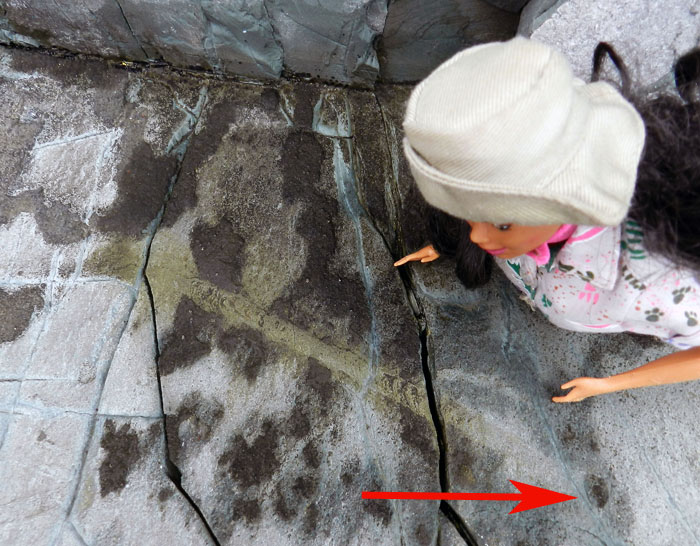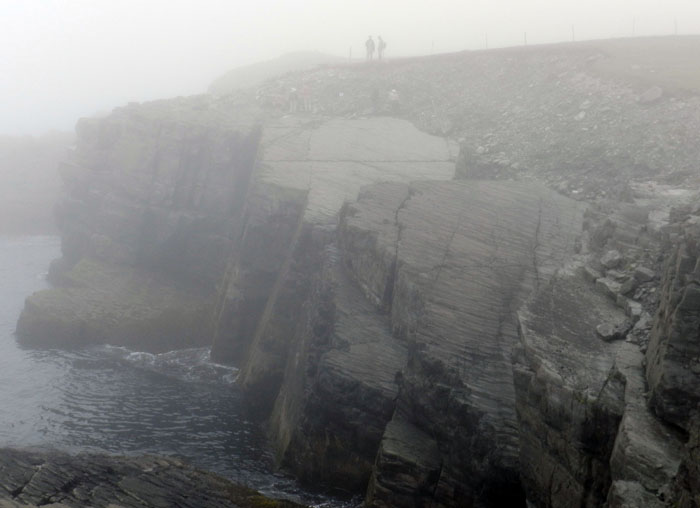Paleontologists have an odd relationship with death. We often joke about how our livelihoods depend on what has died before us, or we experience great delight when we find an exquisite fossil, which probably was buried alive for it to be so well preserved. We also blithely talk about “death assemblages” and happily explain this gruesome term to non-paleontologically inclined students, friends, spouses, and partners without much thought about how it sounds to people outside of our field.
For ichnologists, who mostly study the tracks, burrows, and other vestiges of these lives that preceded us, our perspectives become even more skewed. Once-live animals, through their behavior, made trace fossils. Yet we almost never see what made them. Hence we also spend much of our time among the living, watching them make traces that we can use as analogs for those trace fossils left by their ancestors. Sometimes we find ourselves identifying with modern animals, developing empathy for what they experience as they form traces, a sensitivity that can extend to their trace-fossil equivalents. Hence for ichnologists, these parts of the fossil record become just a bit less removed from death, and we end up feeling for our tracemakers, both long gone and extant.
 Jordi Maria de Gibert, contemplating and lamenting the loss of dinosaurian tracemakers from mass extinctions. The window display was in Basel, Switzerland, one of many places visited by Jordi in his quest to learn all things ichnological. (Photograph by Anthony Martin, who is also pictured in the reflection, along with ichnologists Luis Buatois and Gabriela Mángano, taken in 2003.)
Jordi Maria de Gibert, contemplating and lamenting the loss of dinosaurian tracemakers from mass extinctions. The window display was in Basel, Switzerland, one of many places visited by Jordi in his quest to learn all things ichnological. (Photograph by Anthony Martin, who is also pictured in the reflection, along with ichnologists Luis Buatois and Gabriela Mángano, taken in 2003.)
In this sense, our small and close-knit international community of ichnologists was shocked to learn about the sudden loss of one of our own “tracemakers” this past weekend, Jordi Maria de Gibert. His death was unexpected and its impact accentuated because he and the rest of us had just gathered together only last month for the International Congress of Ichnology (Ichnia) in St. Johns, Newfoundland. We also anticipated seeing him again in his home city of Barcelona in 2016, where he died on Sunday. None of us had prepared ourselves to reflect on his legacy, let alone contemplate the possibility that his cognitive traces would cease any time soon.
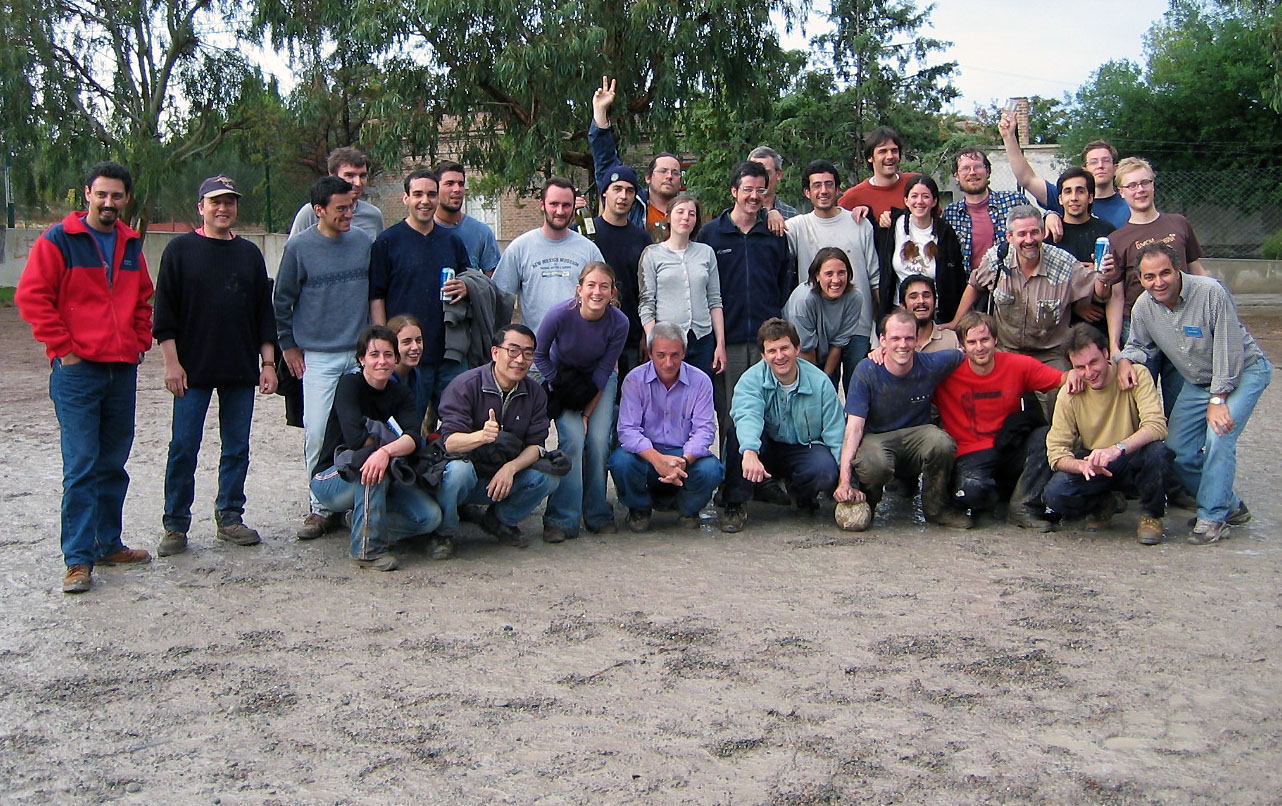 The aftermath of the first Ichnia football match (sometimes known as “soccer” to you Yanks) between ichnologists of Team Gondwana and Team Laurasia, which took place on a pitch near Trelew, Argentina. Jordi, in the middle of the back row, is either signaling “Peace,” “Victory,” or, most likely, ordering two beers: one for him, and one for you so he can sit down to argue about trace fossils with you. (Photograph by Anthony Martin, taken in 2004.)
The aftermath of the first Ichnia football match (sometimes known as “soccer” to you Yanks) between ichnologists of Team Gondwana and Team Laurasia, which took place on a pitch near Trelew, Argentina. Jordi, in the middle of the back row, is either signaling “Peace,” “Victory,” or, most likely, ordering two beers: one for him, and one for you so he can sit down to argue about trace fossils with you. (Photograph by Anthony Martin, taken in 2004.)
Most of our dismay about Jordi’s departure is because we loved him as a person, but it is also surely connected to our witnessing an ascendancy cut short. For instance, at the end of the meeting in St. Johns, Jordi addressed all of us as the newly elected president of the International Ichnological Association, and he had volunteered to serve as the main organizer for the next Ichnia meeting four years from now. His larger-than-life personality was on full display during his informal and impromptu speech: enthusiastic, cheerful, witty, earnest. In the days before then, he delivered multiple presentations on ongoing research projects, most of which revolved around his continuing interests in crustaceans and their traces, as well as those of marine bioeroders, animals that make a living by boring into rocks. Jordi was a prolific publisher of peer-reviewed papers on these topics, and was well known for his cooperative spirit, coauthoring with many ichnologists and other types of paleontologists on these papers.
 Jordi (right, seated), in his preferred life habit, talking about fossils with colleagues (and friends) at an outcrop. And this wasn’t just any outcrop, but was at Mistaken Point, Newfoundland, which has one of the most spectacular Ediacaran fossil assemblages in the world. This had to have been a dream come true for him, as it was for many of us.
Jordi (right, seated), in his preferred life habit, talking about fossils with colleagues (and friends) at an outcrop. And this wasn’t just any outcrop, but was at Mistaken Point, Newfoundland, which has one of the most spectacular Ediacaran fossil assemblages in the world. This had to have been a dream come true for him, as it was for many of us.
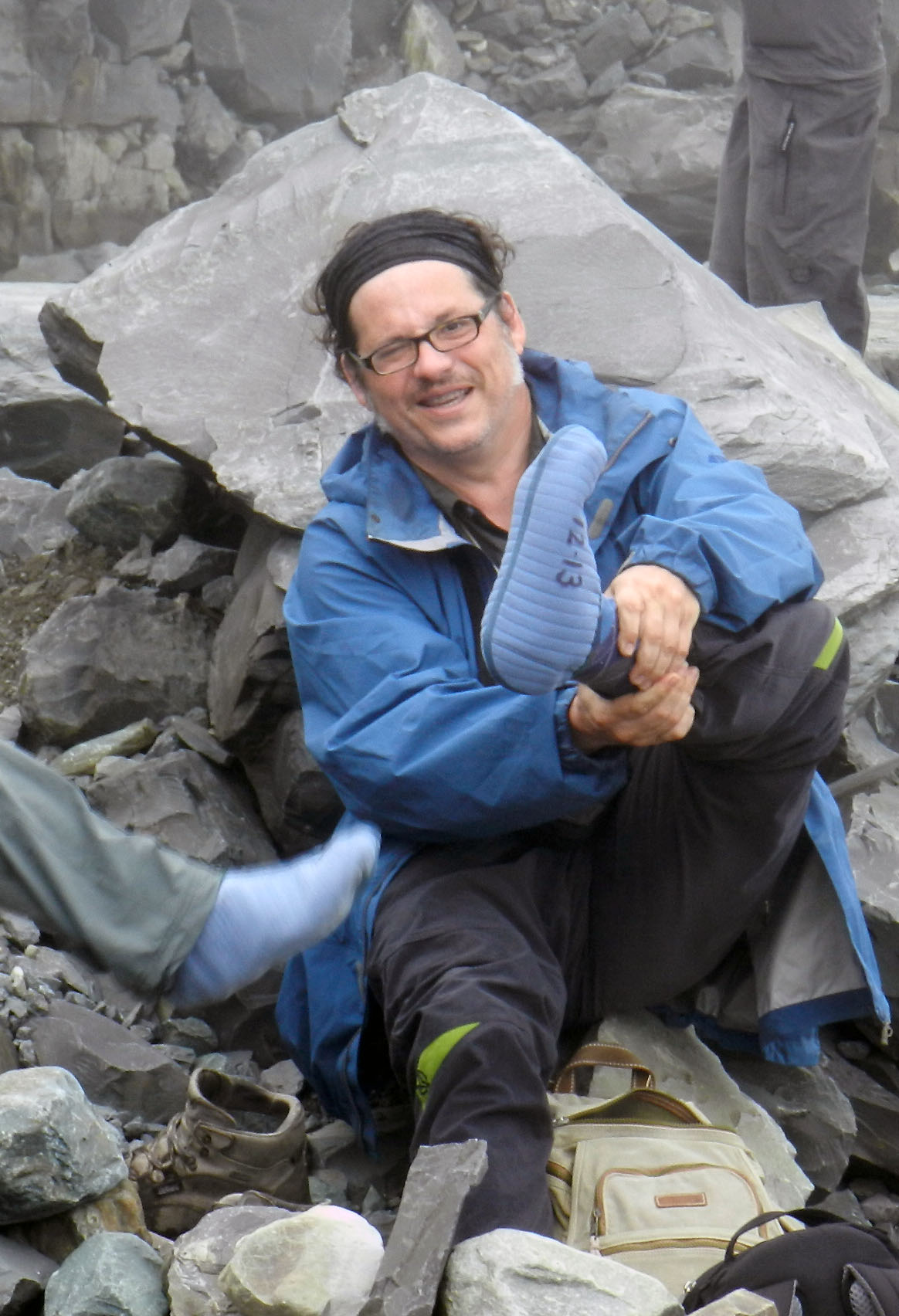 Jordi showing off his “Bama booties,” required footwear for the sacred ground of Mistaken Point, as some other ichnologist vainly attempts to “photobomb” him with his own blue-footed bootie. (Photograph by Ruth Schowalter.)
Jordi showing off his “Bama booties,” required footwear for the sacred ground of Mistaken Point, as some other ichnologist vainly attempts to “photobomb” him with his own blue-footed bootie. (Photograph by Ruth Schowalter.)
I had known Jordi since 1995, having first met in Bornholm, Denmark at a small ichnological meeting there. He and I were still new to our discipline (we were about the same age) and quite green, but eager to learn from our elders. As is typical with many academic friendships, over the next 17 years we would see each other at various meetings, and by my count we saw trace fossils and toasted one another in six countries (Denmark, U.S., U.K., Switzerland, Poland, Canada). Each time together, I grew more impressed with his intense and tenacious will to seek out more knowledge, digest it, and pass it on to others. He was a fierce intellectual who relished the debating of ideas, and was never satisfied with a conversation if he did not leave it wiser. This, of course, benefited all who were brave enough (and lucky enough) to enter into such discussions with him.
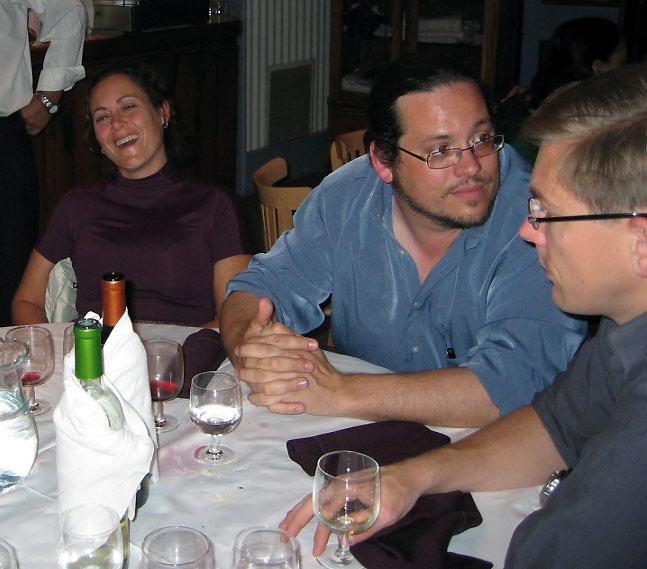 A happy time at the Ichnia 2004 banquet in Trelew, Argentina, with (from left to right) Renata Guimarães Netto, Jordi, and Ludvig Loewemark, where the exchange of ideas and good cheer flowed nearly as fast as the wine.
A happy time at the Ichnia 2004 banquet in Trelew, Argentina, with (from left to right) Renata Guimarães Netto, Jordi, and Ludvig Loewemark, where the exchange of ideas and good cheer flowed nearly as fast as the wine.
Jordi was young as far as ichnologists go, and as I argued in my previous post, the best ichnologists are the most experienced ones. So he knew as well as any of us that gaining more experience in the field was essential, and traveled to many places and studied traces of all ages – from the Ediacaran to the present – and traces of all kinds, from plant roots to dinosaur tracks. Accordingly, because of his dedication and broad interests, he had already become one of our best. In this vein, one of the metaphorical jokes ichnologists tell is how our academic success can be measured by how deeply we can burrow: shallow tiers are the least successful, whereas the deepst tiers are the most successful. Jordi was assuredly well on his way to the deepest tier, but we are all saddened about his unexpectedly reaching the historical layer before so many of us.
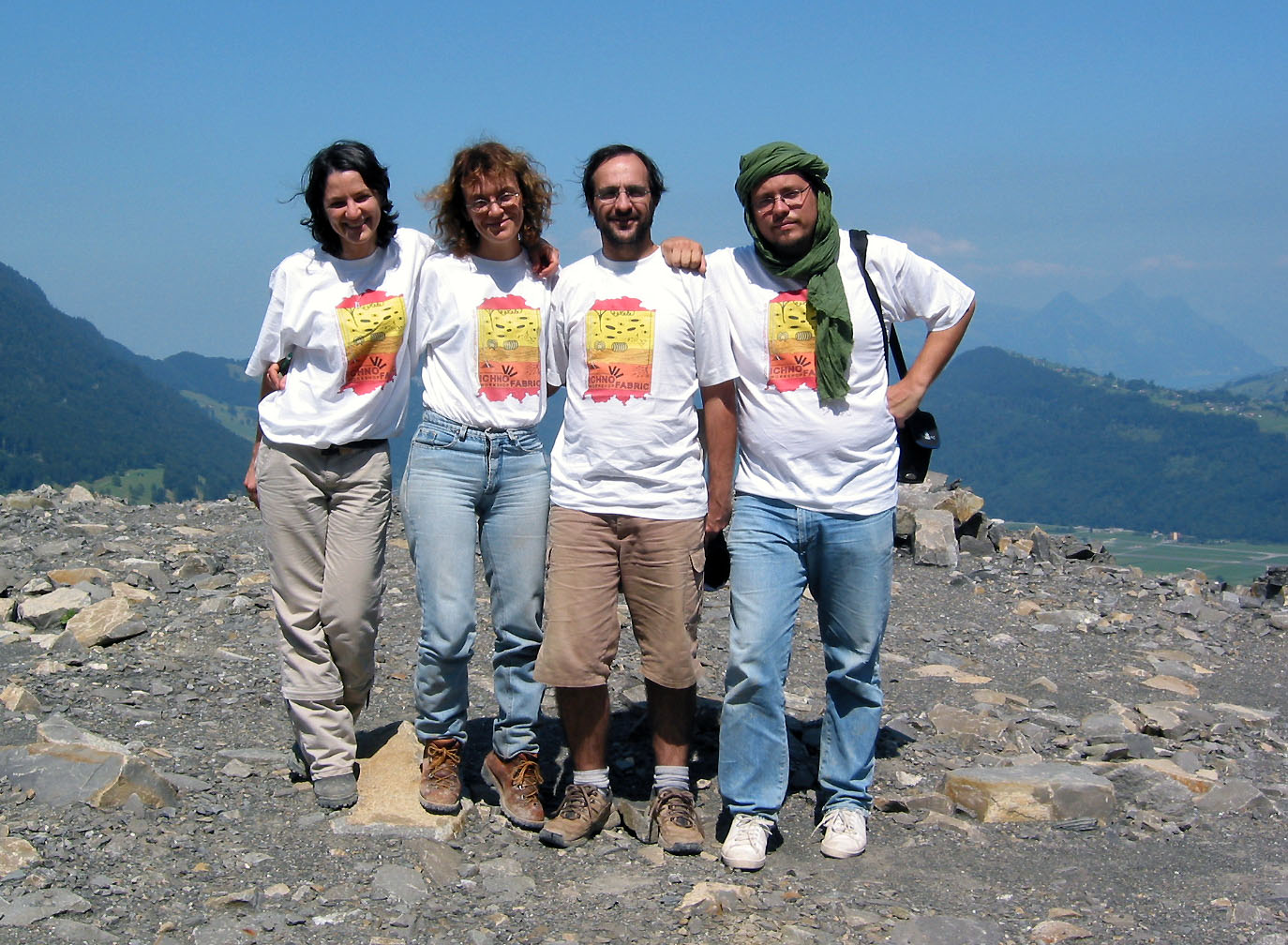 Los quatros amigos, posing happily toward the end of an ichnology field trip in Switzerland in 2003: from left to right, ichnologists Noelia Carmona, Gabriela Mángano, Luis Buatois, and Jordi, sporting some distinctive headgear and proudly flouting conformity. (Photograph by Anthony Martin.)
Los quatros amigos, posing happily toward the end of an ichnology field trip in Switzerland in 2003: from left to right, ichnologists Noelia Carmona, Gabriela Mángano, Luis Buatois, and Jordi, sporting some distinctive headgear and proudly flouting conformity. (Photograph by Anthony Martin.)
I learned about Jordi’s death on Sunday through our mutual ichnologist friend, Renata Guimarães Netto, who had likewise known Jordi for more nearly 20 years. Quickly the word spread through social media, e-mails, and phone calls, our sadness multiplying and magnifying worldwide. Only last month, we had celebrated with him, and now we mourned him, and expressed our sorrow to his family members, and close friends.
To ease some of this pain and enjoy an otherwise beautiful Sunday in Decatur, Georgia, my wife Ruth and I went for a walk. Without thinking, I suggested that we meander in one of the largest, quietest green spaces in Decatur, which turned out to be its cemetery. (Yes, I know. All I can say is that the subconscious is more powerful than we know.) While we strolled, I thought about times spent with Jordi on field trips and in conferences, while also recalling papers he had written and discoveries he had made. As mentioned earlier, Jordi’s interests were varied, but perhaps his favorite research topic was crustacean burrows, especially the burrows of crabs, shrimp, lobsters, and other 10-legged crustaceans. Too bad we were nowhere near the Georgia coast, I thought, as it would have been a fitting and comforting homage for Ruth and I to take in the many decapod burrows of the Georgia beaches and salt marshes, which Jordi had never seen in person.
That’s when an eerie coincidence happened. During our walk, we spotted a former pond on the cemetery grounds, now drained for dredging. There’s something about a big pit of mud that appeals to every ichnologist, so I excitedly suggested that we go take a look to see what traces were there. We expected to find lots of tracks, such as those of birds, raccoons, squirrels, and coyotes, and maybe a few other urban fauna. Instead, though, the muddy surface was perforated by decapod tracks and burrows.
Need to see some crustacean traces, but you live in the landlocked part of Georgia? Just go to a dried pond and look for tracks like these.
These were the traces of crayfish, decapods that diverged from a common ancestor to modern lobsters more than 250 million years ago to live in freshwater environments as their brethren dispersed throughout the seas. A few years back, I studied Cretaceous crayfish and their burrows in Australia, but had never seen a live crayfish in its burrow here in Georgia, let alone seen so many of their tracks in one place. We even saw some crayfish (probably a species of Procambarus) poking their heads and claws out of their burrows, or walking around on the mudflat. So it turned out we did not need to go to the Georgia coast after all to see traces reminding us of Jordi: they had been right here with us the whole time.
 A crayfish at its burrow entrance in the mudpit now in Decatur Cemetery, either defending its territory, or waving goodbye to people who study its kind and their traces. Your choice, but I know which one I’m picking.
A crayfish at its burrow entrance in the mudpit now in Decatur Cemetery, either defending its territory, or waving goodbye to people who study its kind and their traces. Your choice, but I know which one I’m picking.
In April, Jordi began writing about ichnology and invertebrate zoology for a more public audience through his cleverly titled blog, Infaunal Epiphany. His first entry was titled First Post, Hope Not Last!, in which he expressed a growing aspiration to connect with more than just his academic colleagues:
We scientists produce science. We scientists consume science. Most of us do that. We do our research, we publish it and other scientists read it. We are keeping all the fun for ourselves!!! It is true that there are scientists, journalists and writers who devote an effort to popularize science results. They are the ones building a bridge to society and I think it is fair to do that as many of us are investigating on public money.
Jordi wanted to share the fun of science, and in that respect, field trips with him were always a delight. These are probably what I will miss most about him, a pang that becomes particularly acute when I realize that one of our last conversations was about his some day visiting the Georgia coast to see its modern traces with me and our like-minded friends.
Lastly, in the light of his most recent life departing us, perhaps Jordi’s most poignant post on his nascent blog was Seven Reasons to Reincarnate as a Cephalopod. I won’t spoil it for anyone who hasn’t read this wonderful piece, but will just say that this post alone showcases how Jordi’s fine sense of humor blended readily with his science.
We will never know whether Jordi’s wish came true, let alone which cephalopod he might have become, or whether some element of his considerable spirit is now somehow connected to one of his beloved crustacean tracemakers or bioeroders in the past or present. But we can be assured that he will continue to live with us through his works and our memories of him. When our ichnological community meets again in his home town of Barcelona four years from now, his traces will all around us, continuing to inspire us to learn and live more.
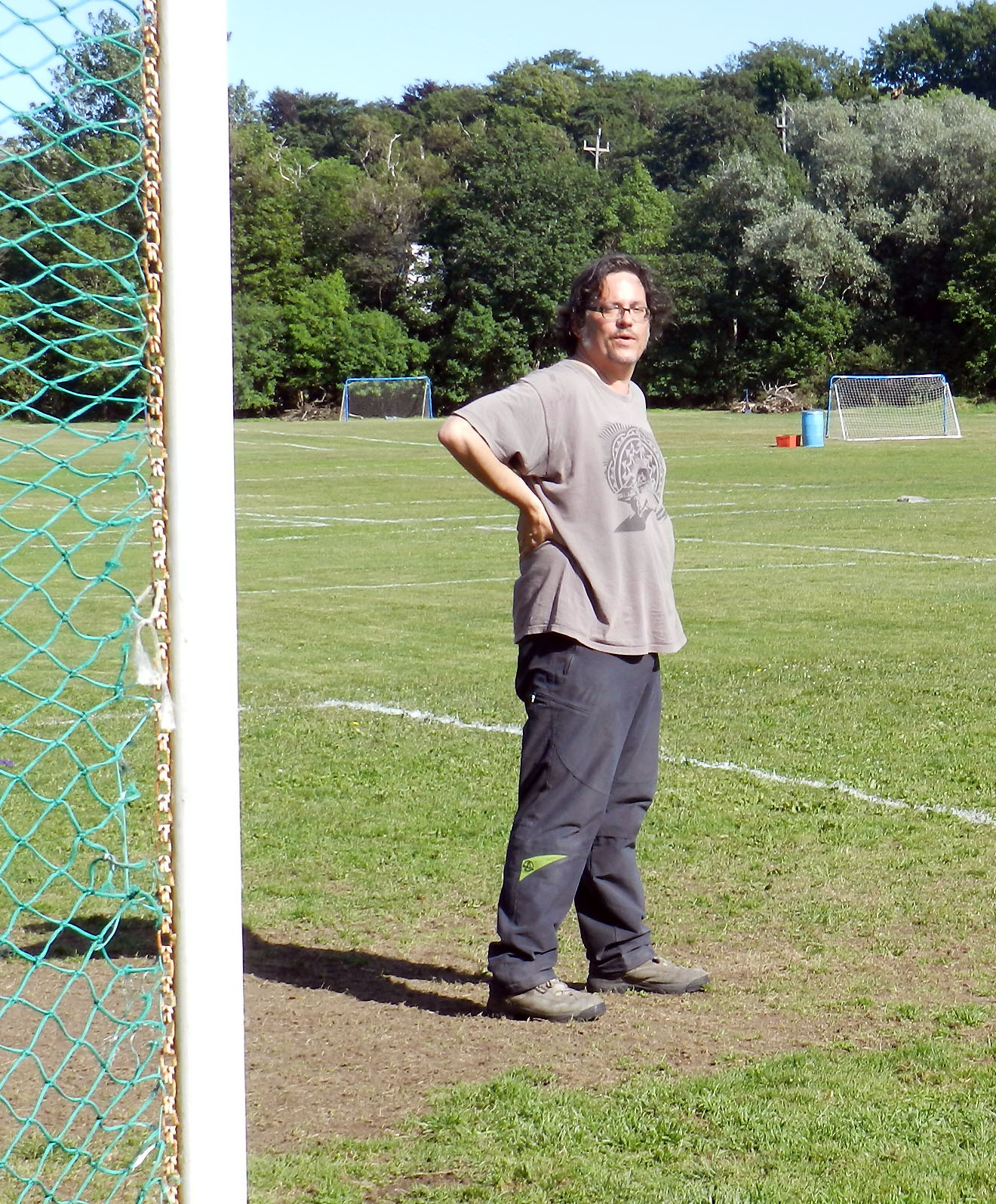 Salud y un abrazo grande, mi amigo Jordi. Vaya con las trazas.
Salud y un abrazo grande, mi amigo Jordi. Vaya con las trazas.
Correction: Someone pointed out to me that the newly elected International Ichnological Association (IIA) president is actually Alfred Uchman, not Jord. Jordi only seemed presidential to me because of his inspiring report given at Ichnia 2012 as outgoing secretary of the IIA and his agreement to host Ichnia 2016. (I am pleased to report that Alfred likewise gave an excellent speech to those gathered.) Apologies for the mistake, and thanks (as always) to anyone who points them out to me.

